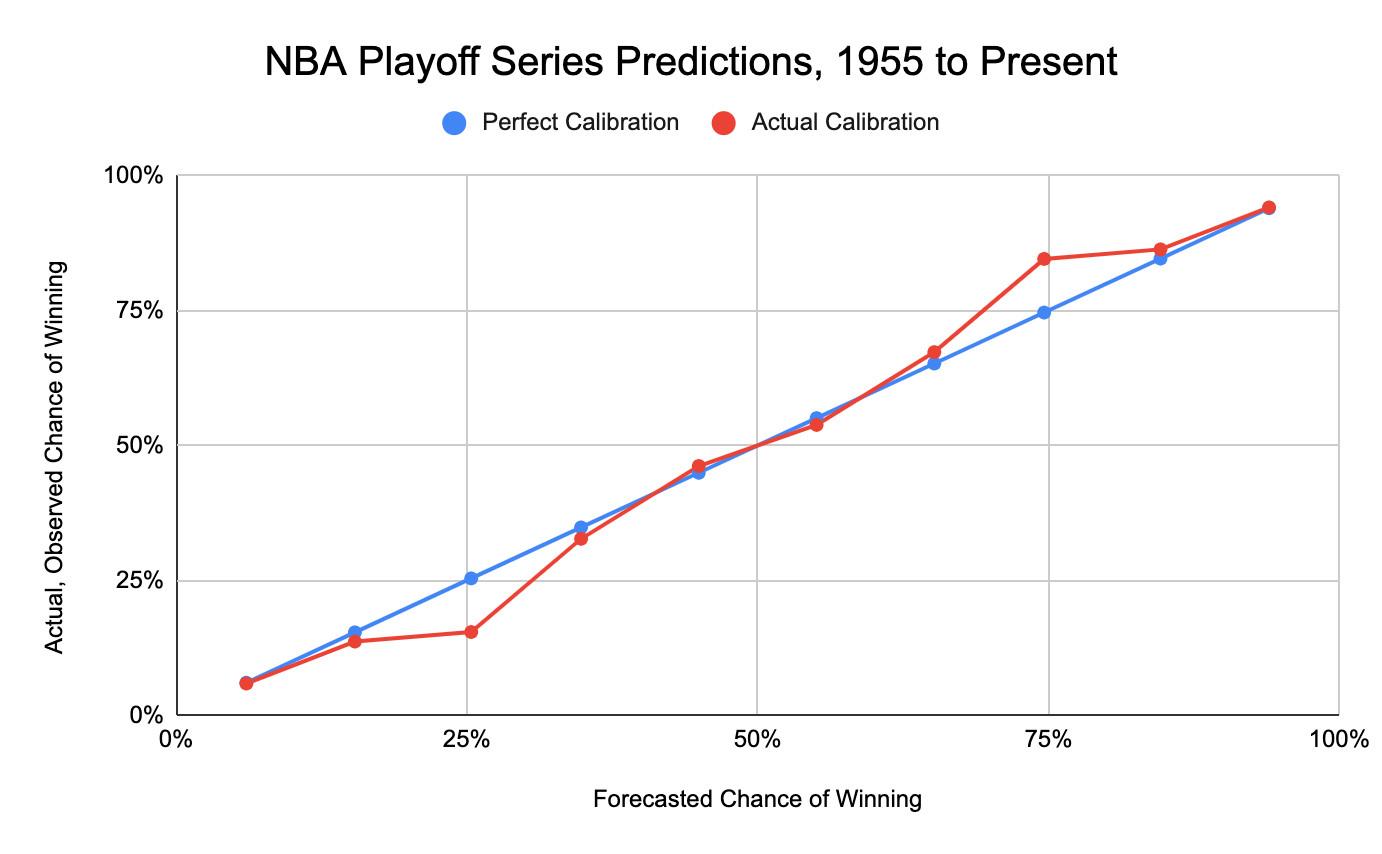Which team will win the 2020 NBA championship? We’ve been waiting to find out for more than a year, ever since injuries and departures incapacitated the dynastic Warriors and set the stage for the most wide-open title race in a decade.
More recently, we’ve been waiting in stasis for months, with the COVID-19 pandemic forcing a postponement and, eventually, an unprecedented postseason situation, with 22 of the league’s 30 teams decamping for Orlando, where they will remain sequestered and compete for a title. Given the strangeness of this season already, anything can happen on the NBA’s new courts in the next few months.
And with today’s launch of The Ringer’s NBA Restart Odds, we’re here to help you make a bit more sense of the weirdness to come. Bubble integrity willing, the Restart Odds will update every night until an NBA champion is decided. Based on team strength as measured by point differential—a historically strong predictor of success—with adjustments for individual wrinkles like player absences, our playoff odds model includes three main features to help NBA fans navigate the weeks and months ahead:
1. The Restart Odds show the single-game odds for each day’s games. On reopening night, for instance, the Jazz are 60-40 favorites over the Pelicans, while the game between the Lakers and Clippers is close to a coin flip (51-49 percent in the Lakers’ favor).
Moreover, once the playoffs begin, the daily odds will reflect the importance of each game to the ultimate outcome of the series. We all know, intuitively, that a Game 4 between the Bucks and Nets with the Bucks ahead 3-0 wouldn’t matter much, while a Game 4 between the Lakers and Clippers with the Lakers up 2-1 would induce a massive swing in the series. For viewers picking and choosing which games to watch on a crowded playoff night, the model can quantify just how much each contest matters.
2. The Restart Odds show the play-in odds for various teams battling for the no. 8 and 9 seeds. If the team that finishes no. 8 in the standings is more than four games ahead of no. 9, it will automatically qualify for the 16-team bracket—but if the two teams are within four games of each other, they’ll enter a play-in period in which the no. 8 seed needs to win one game to advance, while the no. 9 seed needs to win twice.
The model will show the odds that various teams will finish eighth and ninth in their conference, as well as the chances of those teams forcing a play-in game. This portion of analysis is especially useful in the knotty Western Conference, in which six teams are fighting for two spots, and where a literal thousandth of a decimal point could mean the difference between a playoff appearance and an early trip home.
3. The Restart Odds show each team’s chances of advancing through various playoff rounds, from qualifying at all to winning the title.
The structure of the model holds up well historically when back-tested against more than 700 series since the invention of the shot clock. For instance, the model would expect the biggest favorites to win 94 percent of their series, and indeed, 94 percent have; it expects the favorites in the closest series to win 55 percent of the time, and they won 54 percent. On this graph, the blue line represents a “perfect” model, and the red line is the actual result. Outside of one blip, the two lines track each other perfectly. (A similar blip appears in the same spot on a graph of FiveThirtyEight’s NBA playoff model. Reality is never quite as perfect as one would like.)

Of course, given the uncertainty around this postseason, the Restart Odds also account for factors beyond basic team strength. They strip away home-court advantage, because every team is playing away from home. They also incorporate injuries and other player absences. But accounting for missing players is tricky because their production doesn’t just disappear; their minutes are instead distributed to other players in the rotation. Rajon Rondo, for instance, has played worse than Alex Caruso this season—so while the Lakers could end up lamenting the injured point guard’s absence while he recovers from a broken thumb, they also might benefit from extra playing time for Caruso. It’s hard to know in advance.
So the model handles absences from role players conservatively, and absences from stars with aggression. If LeBron James were to miss a game, naturally, the Lakers’ odds of winning that contest would plummet. For now, pity the Wizards without Bradley Beal and Davis Bertans, their top two players by advanced metrics.
That’s how the model works, broadly speaking. But what does it show to start? Here are three initial takeaways.
1. The Bucks remain title favorites.
I already explored the Bucks’ favorite status at length earlier this month; read this piece for many more thoughts on Giannis Antetokounmpo, Khris Middleton, and the Bucks’ historic dominance.
But the Restart Odds underline another reason to like Milwaukee’s chances: their easier path in the Eastern Conference. The Nets and Wizards are sending depleted rosters to the bubble, so the Bucks are as close to a guarantee to reach the second round of the playoffs as possible. In the other conference, however, the Lakers will probably play Memphis or New Orleans in the 1-seed vs. 8-seed matchup, and while L.A. is still the huge favorite against any first-round opponent, there’s a material difference between a 99 percent chance to advance (the Bucks’ odds) and a 93 percent chance (the Lakers’). Think about it this way: The Bucks have a 1 percent chance to lose before the second round, while the Lakers are seven times as likely to lose that early.
The Clippers’ potential to lose early is even greater. Kawhi Leonard and Co. are essentially locked into the no. 2 or 3 seed in the West, so they will be forced to play a very good team as early as the first round. Their most likely first-round opponents are the Mavericks, Rockets, and Thunder; if they win the first round, they’ll likely have to face the Nuggets or another viable team from the Western bunch. The Clippers, again, are favored to beat any of those teams—math aside, I would certainly pick them to win—but the challenges could stack up over the full postseason.
The Bucks would also be the clear favorite against any potential opponent in the conference finals, while a Lakers vs. Clippers clash would be roughly a 50-50 coin flip. That’s another point in Milwaukee’s favor—though even with all those logistical advantages, the Bucks are still about as likely to lose the title as they are to win it. Good news: We’ll all have reason to watch the games after all.
2. Why does the bubble include 22 teams again?
The NBA probably should have invited 20 teams to Orlando if it wanted to best balance more games (for more TV revenue) with more safety (via fewer players inside the bubble environment). But the 21st and 22nd teams in the standings, the Wizards and Suns, have a combined 1 percent chance of reaching the 16-team bracket. To make the playoffs, Washington first needs to make up two games on either the Nets or Magic, and then beat the no. 8 seed twice in a row in the play-in round. They’d have to do all of this without Beal or Bertans. (The model estimates the new Wizards would win in the neighborhood of 20 games over a full season.) Meanwhile, the Suns need to leapfrog four teams in the Western standings just to have a chance at the play-in round, and have to do so while playing one of the most challenging schedules of any team in Orlando.
Washington’s first two games in the bubble come against the Suns and Nets—a pair of barn burners to welcome the viewing public back to NBA basketball.
The most likely play-in result in the Western Conference would pit Memphis against New Orleans, followed by Memphis-Sacramento and Memphis-Portland. There is only an 11 percent chance of a play-in round in the East, versus a 91 percent chance of a play-in round in the West.
3. The Warriors aren’t around anymore—but the title race is still top-heavy.
Only six teams boast at least a 1 percent chance to win the title; only 11, or half the teams in the bubble, are at 1 percent chance to reach the Finals. That number could change as play proceeds in Orlando—a team like the 76ers has the talent, if not the track record, to make a run, and if they play well over their next eight games and boost their position in the bracket, their odds will surely inch upward. As matters stand now, though, there is a decent chance the 76ers will need to defeat the Celtics, Raptors, and Bucks in a row just to reach the Finals, so it’s no surprise that their calculated chance—below 1 percent initially—comes in lower than a pure talent rating might suggest.
In NBA history, only two teams seeded lower than third in their conference have ever won the title: the fourth-seeded 1968-69 Celtics and the sixth-seeded 1994-95 Rockets. Teams seeded no. 1 have won more than 70 percent of the championships in the shot clock era.
It’s possible that the strangeness of the 2020 postseason will flip this usual dynamic and lead to more upsets and unexpected results. Maybe the lack of home-court advantage will hurt the top teams more than the math suggests; maybe the mental stress of playing inside a bubble inside a country riven by a pandemic will affect some players more than others. But even with all the swirling uncertainties, it’s hard to bet against the teams with Giannis and LeBron and Kawhi as the most likely to raise this season’s trophy. Keep track of the Restart Odds every day for the next few months, and you’ll be able to see just how likely that is, from start to finish inside the bubble.
